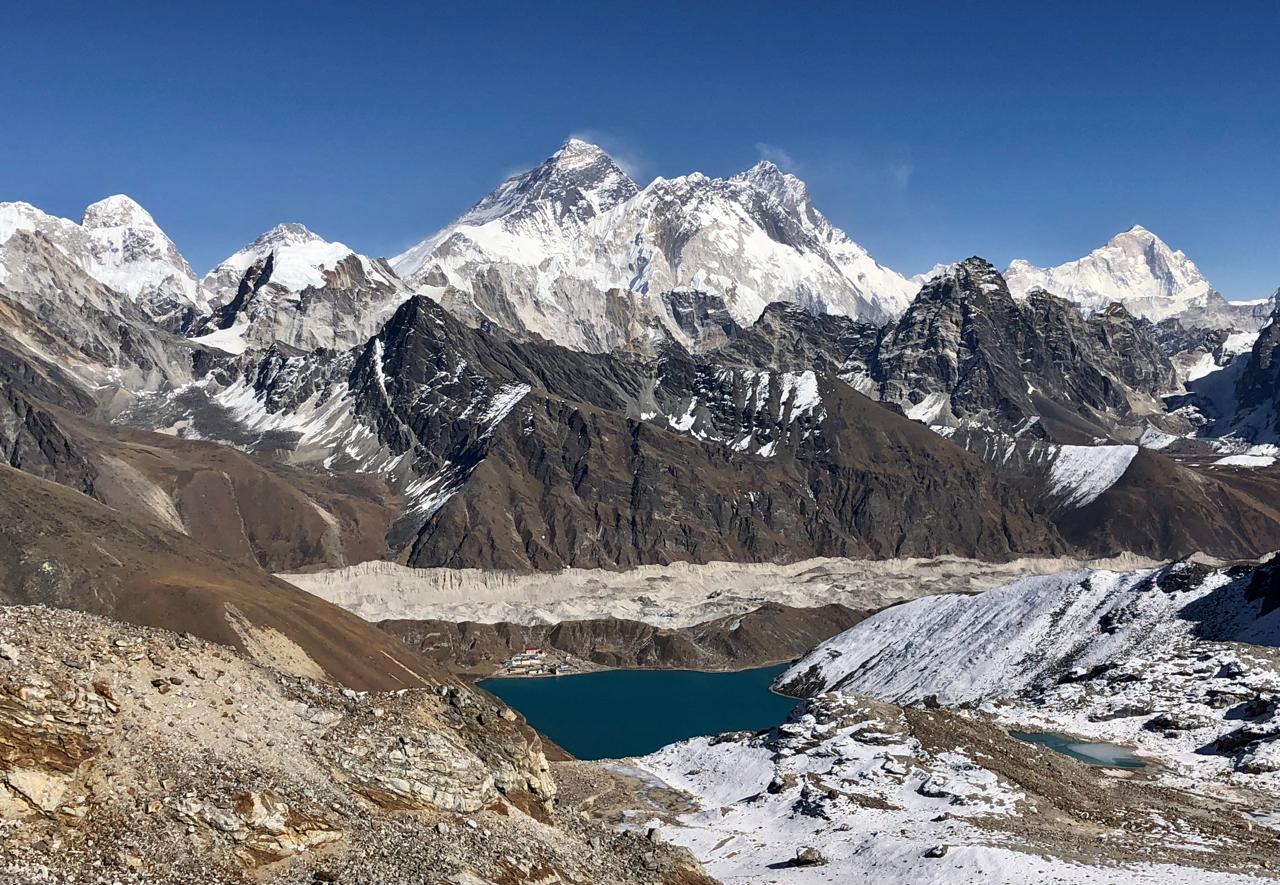Nanga Parbat (8,126m), often referred to as the “Killer Mountain,” is the ninth-highest peak in the world and one of the most formidable 8,000-meter giants in Pakistan. Its name, derived from Sanskrit, means “Naked Mountain,” a reference to its massive, exposed rock faces and dramatic prominence over the surrounding valleys. Towering above the Indus River in the western Himalayas, Nanga Parbat has long captured the imagination of climbers with its combination of beauty, danger, and raw alpine challenge.
Rising with striking grandeur, Nanga Parbat dominates the landscape of Gilgit-Baltistan, standing as a solitary sentinel at the western edge of the Himalaya. The mountain’s immense south face, known as the Rupal Face, is the highest mountain wall in the world, an awe-inspiring vertical rise of more than 4,500 meters. Its remote position and towering relief give it an almost mythical status, making it both an irresistible goal and a daunting challenge for mountaineers seeking to test their limits at extreme altitude.
Nanga Parbat offers several established climbing routes, each presenting unique technical and environmental challenges. The Diamir Face remains the most commonly used for modern expeditions due to its relative accessibility and slightly safer terrain compared to other approaches. Still, the climb demands exceptional endurance, careful acclimatization, and skillful navigation of ice, rock, and mixed terrain. For those who reach its summit, the reward is a breathtaking panorama of the Karakoram and western Himalayan ranges—one of the most striking views on Earth.
Despite its allure, Nanga Parbat has earned a formidable reputation for its unpredictability. Historically, it has been one of the deadliest of the 8,000-meter peaks, with sudden storms, avalanches, and technical barriers testing even the most experienced climbers. Each ascent requires precise planning, mental resilience, and respect for the mountain’s volatile conditions. It is this blend of challenge and danger that continues to attract elite alpinists from around the world.
The Nanga Parbat Expedition, organized by Ticino Treks, is crafted for seasoned high-altitude climbers seeking to push their physical and mental limits on one of the world’s most legendary peaks. With professional high-altitude Sherpas, expert expedition leadership, and a fully equipped Base Camp, the climb combines safety, strategy, and adventure. For those who dare to ascend this monumental mountain, the expedition promises an experience that blends technical mastery, Himalayan grandeur, and the timeless spirit of true mountaineering exploration.
Trip Notes:
Best Time to Visit:
-
Summer (June – August): Ideal climbing window with stable conditions in the western Himalayas.
Expedition Highlights:
-
Nanga Parbat Base Camp (4,200m): Located beneath the massive Diamir Face, offering panoramic views of the summit ridge.
-
Fairy Meadows: One of Pakistan’s most scenic alpine meadows, with postcard-perfect views of Nanga Parbat’s north face.
-
Diamir Face Route: The most accessible and commonly used route for summit attempts.
-
Cultural Experience: Explore Pakistan’s Gilgit–Baltistan region, home to rich mountain traditions and stunning landscapes.
Climbing Route:
-
Standard Route: Diamir Face
-
Camp I (~4,900m): Accessed via glacier and moraine slopes.
-
Camp II (~6,100m): Located at the base of the Kinshofer Wall, involving steep snow and ice.
-
Camp III (~6,700m): Positioned above the Kinshofer Wall on mixed terrain.
-
Camp IV (~7,200m): High camp for summit push, situated below the summit ridge.
-
From Camp IV, climbers ascend through steep snowfields and a sharp ridge to reach the main summit (8,126m).
Difficulty Level:
-
One of the most demanding and technical 8000m climbs in the Himalayas.
-
Requires advanced experience on previous high-altitude peaks (7000m–8000m).
-
Technical challenges include mixed climbing, fixed ropes, and high avalanche risk.
-
Recommended for experienced climbers only — not suitable for beginners.
Key Challenges:
-
Extreme Altitude: Prolonged exposure above 6,000m demands strong acclimatization.
-
Avalanche & Rockfall Risk: The Diamir Face is prone to natural hazards.
-
Unpredictable Weather: Sudden storms and high winds are common.
-
Steep Kinshofer Wall: Requires strong technical climbing skills.
-
Physical Endurance: Demanding route with long summit days and heavy loads.
Training & Preparation:
-
Fitness: Excellent physical conditioning, with focus on endurance and strength.
-
Technical Skills: Experience with fixed ropes, ice axes, crampons, and crevasse rescue.
-
Altitude Acclimatization: Prior climbs above 6,000m recommended before attempting Nanga Parbat.
Safety Considerations:
-
Route Hazards: Avalanches, serac falls, and severe weather changes.
-
Climbing Strategy: Multiple acclimatization rotations before summit push.
-
Emergency Communication: Satellite phone, walkie-talkies, and oxygen support available.
Permits Required:
-
Nanga Parbat Climbing Permit (issued by Pakistan Ministry of Tourism)
-
Gilgit–Baltistan Trekking & Environment Fee
-
Liaison Officer Fee
-
Park and Conservation Charges









